Illustrative Image: Optimal Sesame Cultivation: Why Sole Cropping Outperforms Intercropping with Maize, Soya Bean, and Cowpea in Nigeria’s Guinea Savanna
Image Source & Credit: MDPI
Ownership and Usage Policy
A recent study by Oloniruha et al. (2024) titled “Evaluation of some growth and yield attributes of sesame (Sesamum indicum L.) intercropped with maize, soya bean and cowpea in Southern Guinea Savanna of Nigeria” published in the International Journal of Agriculture and Rural Development, SAAT FUTO, reveal that sesame achieved its highest growth and yield when grown as a sole crop, with intercropping significantly reducing its performance.
“
Sesame grows best as a sole crop; intercropping, especially with maize, significantly reduces its growth, yield, and overall performance.
-Oloniruha et al. 2024
This study investigates the effects of intercropping on the growth and yield of sesame (Sesamum indicum L.) in the Southern Guinea Savanna of Nigeria, focusing on its performance when cultivated alongside maize, soya bean, and cowpea. The authors reveal that sesame achieved its highest growth and yield when grown as a sole crop, with intercropping significantly reducing its performance.
Among the intercrop combinations, maize exerted the most suppressive effect on sesame, primarily due to shading and competition for essential nutrients. In contrast, soya bean and cowpea were found to be more compatible, causing less growth inhibition.
Measurements of plant height, stem girth, number of leaves, and primary branches consistently showed superior development in sesame grown alone. Despite a local preference for intercropping, the study concludes that maize is not a suitable companion crop for sesame when sown simultaneously.
How the Study was Conducted
The experiment was conducted during the 2022 rainy season at the College of Agriculture, Kabba, Nigeria, to evaluate the growth and yield performance of sesame (Sesamum indicum L.) when intercropped with maize, soya bean, and cowpea. A Randomized Complete Block Design (RCBD) was used, consisting of four treatments: sole sesame (control), sesame + maize, sesame + soya bean, and sesame + cowpea. Each treatment was replicated three times to ensure statistical reliability.
Planting and spacing arrangements were as follows:
Sesame: 30 × 10 cm
Maize: 75 × 25 cm
Soya bean and cowpea: 50 × 10 cm
All crops were sown simultaneously on well-prepared seed beds, and standard agronomic practices—including weeding, pest control, and fertilizer application—were uniformly applied across all treatments. Data collection occurred biweekly and included measurements of plant height, stem girth, number of leaves, and number of primary branches (at 12 weeks). Final seed yield was also recorded. For statistical analysis, data were processed using Analysis of Variance (ANOVA), and treatment means were compared using the Duncan Multiple Range Test (DMRT) to determine significance among the intercropping combinations.
What the Authors Found
The authors found that sole sesame significantly outperformed all intercropped treatments across all measured parameters, including plant height, stem girth, number of leaves, number of primary branches, and seed yield. Intercropping negatively affected sesame growth and yield, though the extent of suppression varied by companion crop. Sesame intercropped with maize experienced the most pronounced reduction in performance due to intense competition for nutrients and light. Maize’s tall canopy structure overshadowed sesame plants, limiting light interception and reducing photosynthetic activity.
Conclusion
Why is this important
Guidance on Optimal Crop Combinations: The research provides crucial insights for farmers on selecting compatible intercrops. It highlights that while intercropping is widely practiced to maximize land use, maize significantly reduces sesame yield, making it an unsuitable partner. In contrast, soya bean and cowpea show better compatibility, offering more viable intercropping options.
Enhanced Agricultural Productivity: Findings demonstrate that sole sesame cultivation yields the highest output, suggesting that monocropping may be more profitable under certain conditions. However, among intercrops, sesame with soya bean outperforms other combinations, indicating that legume-based systems can still support productivity.
Land-Use Efficiency and Sustainability: In regions like Nigeria’s Southern Guinea Savanna, where land and soil fertility are limited, the study offers practical solutions. By identifying intercrops that minimize competition and enhance resource use, it supports more sustainable and efficient land management.
Contribution to Food Security and Economic Growth: Sesame is a valuable cash crop, especially for oil production. Improved yield strategies through informed intercrop selection can increase farmer incomes and contribute to broader food security and economic development goals in sesame-growing regions.
Scientific and Policy Relevance: The study provides a foundation for agricultural scientists to refine cropping recommendations and encourages further research into legume-sesame systems. It also equips policymakers with data to support sustainable farming practices and extension programs targeting yield optimization.
What the Authors Recommended
- Due to significant suppression of sesame growth from shading and nutrient competition, the authors advise farmers not to intercrop sesame with maize, as this combination consistently led to reduced yields.
- Legumes like soya bean and cowpea demonstrated better compatibility with sesame. The authors recommend further investigation into sole cropping and intercropping systems involving these legumes to better understand their long-term impact on sesame productivity.
- To enhance resource use efficiency, the study suggests evaluating intercropping systems using Land Equivalent Ratio (LER) and Land Equivalent Coefficient (LEC). These metrics can guide the selection of cropping systems that maximize yield per unit area.
- Farmers should receive targeted guidance on optimal crop arrangements, planting schedules, spacing, and fertilization when intercropping sesame. Improved agronomic practices can help mitigate interspecies competition and improve sesame productivity in intercropping systems.
In conclusion, this study underscores the importance of crop compatibility in intercropping systems, revealing that sole sesame cultivation delivers superior growth and yield, while maize significantly hampers its performance. For optimal productivity and sustainability, farmers are encouraged to consider legume companions like soya bean and cowpea or adopt sole cropping practices tailored to local conditions.





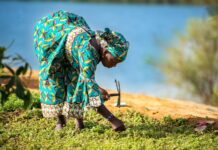
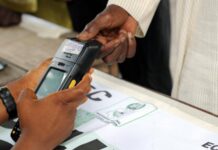
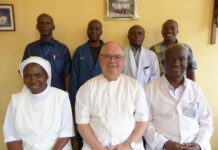
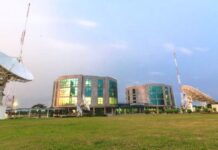
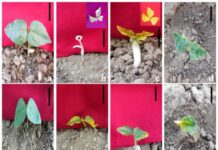
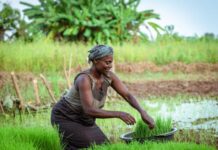

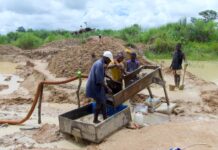



 The African Research (AR) Index is a comprehensive scholarly directory and database focused explicitly on journal publishers that publish and disseminate African research.
The African Research (AR) Index is a comprehensive scholarly directory and database focused explicitly on journal publishers that publish and disseminate African research.

